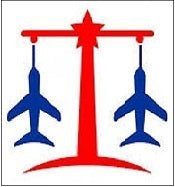Download - Téléchargez
Notre nouveau Catalogue 2025




Abrami, Léon - The Saint-Etienne Airfields Affair (1930) Where one of the ancestors of the Safran Group is accused - wrongly - of embezzlement....
Afficher tous les détails

Convention on International Civil Aviation - 1944 The Second World War was a powerful catalyst for the development of aviation. As a result, the ...
Afficher tous les détails

Habana 1928 - Convention on Inter-American Commercial Aviation Because of the US refusal to join the League of Nations, the rules of the Paris Conv...
Afficher tous les détails

Pillet, Priscille - ACNUSA and administrative sanctions for airline noise (2019) University of Aix-Marseille, IFURTA The pleasant and enjoyable s...
Afficher tous les détails

Convention for the Unification of Certain Rules Relating to International Carriage by Air, signed at Warsaw on 12 October 1929. The Warsaw Conventi...
Afficher tous les détails